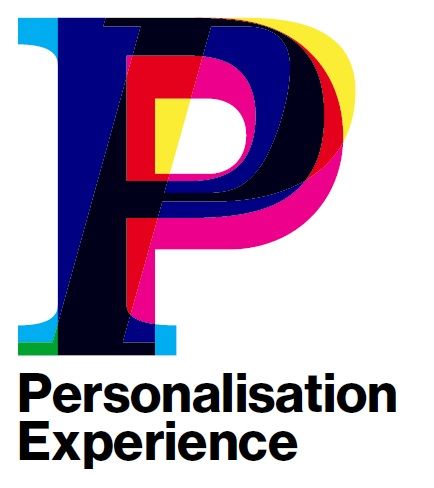Driving Personalisation using DPC for Printed Apparel
)
The culture and footprint of fashion embodies creativity and style - yet, beneath the shiny gloss lies a complex, inefficient industry, acutely challenged by inventory management, over-stocks and issues with sustainability. We talked with Lui Iarocheski, a fashion designer turned technology specialist and champion of digital transformation, focussed on reshaping the fashion manufacturing landscape.
Lui Iarocheski, an expert in fashion and digital innovation, embarked on his fashion journey with an unconventional start in international relations. His inherent creativity led him to pursue fashion design, culminating in the launch of his own brand. However, he soon grappled with the industry's inefficiencies, particularly the inventory issue which resulted in excess stock and wastage. This pushed him to delve into 3D digital technologies, transforming not only his brand but also catapulting him into the fashion tech space.
Whilst building his own brand, Lui struggled to harness the power of technology for mass manufacture, and he pivoted his fashion business towards personalised, couture production. In this controlled environment his brand could take the best attributes of tech and utilise them to create, fit and sample garments using digital technologies – only then would they be manufactured into physical garments.
Pioneering in 3D digital product creation, Larocheski developed a unique production model based on digital technology. Designs were created in 3D, with the physical product only produced once the digital version was sold. This innovative approach not only addressed the problematic stock issue but also significantly reduced in-house waste. In addition, Lui was able to offer personalisation and customisation to his customers, enhancing the shopping experience while remaining efficient and sustainable.
For many if not all fashion brands – the digital transformation journey is not without its roadblocks. One key challenge is the existing skills gap in the industry. Developing 3D designs requires a blend of traditional craftsmanship, software skills, and understanding of garment construction. To bridge this gap, Iarocheski advocates for a blend of education and hands-on training in digital technologies explaining “Collaboration and mentorship programs featuring highly skilled users of these technologies could also serve as viable solutions to nurture the required skills”.
To encourage the adoption of digital technologies across the entire supply chain, Iarocheski suggests a strategic and user-centric approach. Instead of viewing digital adoption as a disruption, it should be viewed as an enabler. The incorporation of digital tools should be strategic, mindful, and holistic. As he puts it, "By embracing digital tools, we are not only streamlining production or enhancing design capabilities, but we are also rethinking what is possible in fashion."
In this vein, Lui proposes that leadership plays a critical role in shifting perceptions and fostering a positive digital culture within the industry. “It's necessary for leaders to demonstrate the full potential of these technologies and their benefits. This includes the ability to streamline production, enhance design capabilities, reduce time to market, and most importantly, contribute to sustainability”.
In conclusion, Lui Iarocheski's case study serves as a roadmap for the industry on the adoption of digital technologies. By merging traditional craftsmanship with technology, the fashion industry can transform its operations, improving efficiency, enhancing customer experience, and reducing its environmental footprint. The road to digital transformation is challenging, yet promising, as it opens up a world of possibilities for fashion's future.
Need for Skilled Users - Fostering a rich pool of talent conversant with new digital tools is paramount. Collaboration and structured mentorship programs can offer a dual advantage: they expedite the learning curve for emerging talents and ensure a seamless evolution of the industry's operational framework. These initiatives not only empower individuals with cutting-edge skills but also cultivate a culture of innovation, thereby positioning the fashion industry at the forefront of technological adoption and creative excellence.
Strategic Adoption of Digital Tools - The urgent call for a digital overhaul in the fashion industry is not a disruption but a strategic necessity. By adopting a strategic, holistic approach to integrating digital tools, the industry can enhance its design capabilities, advance production efficiency, and market responsiveness. This forward-thinking perspective not only enhances the creative and operational capacities of the industry but also lays down a sustainable, innovative pathway for future growth.
Leadership's Role in Digital Transition - The shift towards a digital culture within the fashion industry significantly relies on its leadership. Leaders must be tasked with demonstrating the value and expansive potential of digital tools, beyond mere operational benefits to sustainable practices. This proactive stance will nurture a positive reception and holistic integration of digital tools, fostering an environment of innovation and ethical practices.
Merging Traditional Craftsmanship with Technology - The future of the fashion industry lies in the blend of traditional craftsmanship and modern technology. This synthesis promises not only operational excellence and innovation but also a reduction in environmental impact. By adopting this dual approach, the industry sets a precedent for future growth that is rooted in innovation, efficiency, and environmental consciousness, redefining the boundaries of what is considered possible in fashion.
Discover the latest innovations in garment ormat printing at FESPA Global Print Expo 2024, Europe’s leading print and signage exhibition. Taking place from 19th – 22nd March 2024 at RAI Amsterdam, Netherlands. Register here to visit and use code FESJ401.


